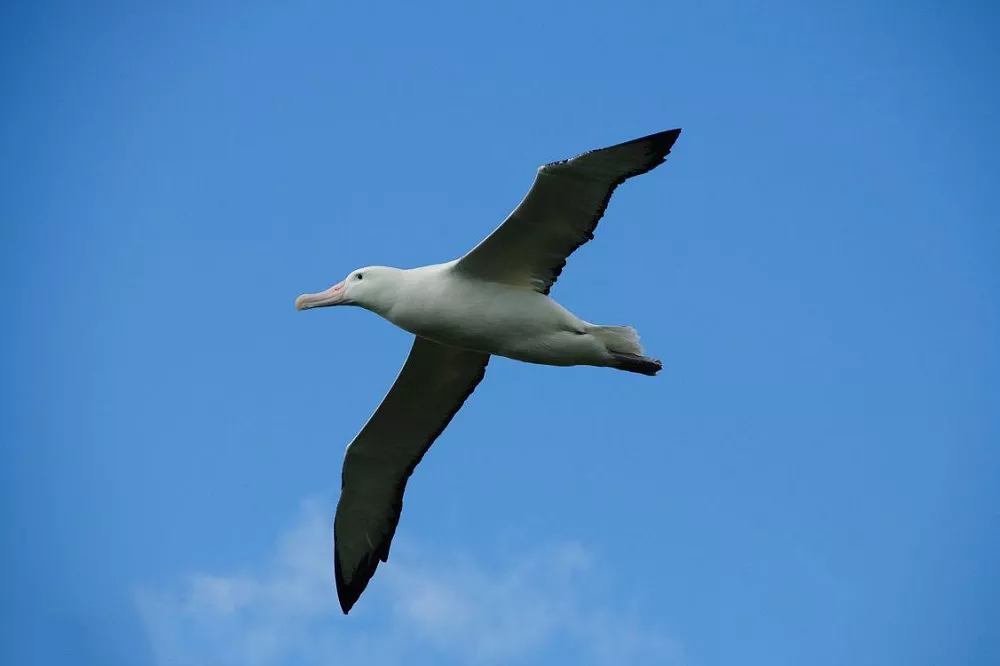The Wandering Albatross is a majestic bird that has captured the imagination of both scientists and nature enthusiasts alike. One of its most impressive features is its wingspan, which can reach up to an astonishing 11 feet. In this article, we will explore what makes the Wandering Albatross’ wingspan so remarkable and delve into some interesting facts about this magnificent bird.
What is a Wandering Albatross?
The Wandering Albatross (Diomedea exulans) is a species of albatross that is part of the Diomedeidae family. It is one of the largest birds in the world and is known for its impressive wingspan and ability to fly long distances without flapping its wings. The Wandering Albatross is also famous for being a monogamous bird that mates for life and can live for up to 50 years.
Physical Characteristics
The Wandering Albatross is known for its large size and impressive wingspan. Adult birds can weigh up to 12 kg (26 pounds) and have a body length of approximately 1 meter (3.3 feet). However, it is their wingspan that truly sets them apart from other birds. As mentioned earlier, their wings can span up to 11 feet, making them one of the largest flying birds in the world. This means that the Wandering Albatross can glide effortlessly over vast stretches of ocean without expending too much energy. Additionally, they have a streamlined body and a hooked bill that is perfect for catching fish and squid.
Habitat and Distribution
The Wandering Albatross is a pelagic bird, which means that it spends most of its life at sea, only coming ashore to breed. It is found in the Southern Ocean and breeds on remote islands such as South Georgia, Macquarie Island, and the Falkland Islands. These islands provide a safe haven for the birds to mate and raise their chicks away from predators such as rats and cats. The Wandering Albatross is also a highly migratory bird, traveling vast distances across the ocean in search of food.
Feeding Habits
The Wandering Albatross is a carnivore and feeds primarily on fish and squid. They have an incredible sense of smell that allows them to detect prey from a distance. Once they have spotted potential food, they will glide down to the surface of the water and use their hooked bill to catch their meal. The Wandering Albatross can also ingest plastic debris mistakenly, which has caused concern among conservationists due to the detrimental effects this can have on the bird’s health.
Threats and Conservation
Like many species of albatross, the Wandering Albatross is threatened by human activities such as overfishing and pollution. These activities can impact the bird’s ability to find food and can also cause health problems if they ingest plastic waste. Additionally, non-native predators such as rats and feral cats can pose a significant threat to nesting birds and their chicks.
To address these threats, various conservation efforts are underway. For example, several organizations are working to reduce the amount of plastic waste in the ocean, while others are working to establish predator-free islands where the birds can breed safely. These efforts have helped to stabilize populations of Wandering Albatross, but more work needs to be done to ensure their long-term survival.
Interesting Facts about the Wandering Albatross
- The Wandering Albatross has the largest wingspan of any bird in the world, reaching up to 11 feet.
- They are also known for their ability to fly long distances without flapping their wings, thanks to their unique body structure and wind patterns.
- The Wandering Albatross is a monogamous bird that mates for life and can live for up to 50 years.
- They have a highly developed sense of smell that allows them to detect prey from a distance.
- The Wandering Albatross can ingest plastic debris mistakenly, which has caused concern among conservationists due to the detrimental effects this can have on the bird’s health.
- Various conservation efforts are underway to protect the Wandering Albatross and ensure its long-term survival.
Conclusion
The Wandering Albatross is a remarkable bird that is known for its impressive wingspan and ability to fly long distances without flapping its wings. It is also a highly migratory and monogamous bird that feeds primarily on fish and squid. Despite its size and strength, the Wandering Albatross faces significant threats from human activities such as overfishing and pollution. However, various conservation efforts are underway to protect the bird and ensure its long-term survival. By educating ourselves about these incredible birds and supporting conservation efforts, we can help to protect them and preserve their place in the natural world.
Related topics:
Bird with the Largest Wingspan: the Wandering Albatross
Where Do Albatross Live? All You Need To Know
Where do Wandering Albatross Live?


 Facebook
Facebook  Instagram
Instagram  Youtube
Youtube 